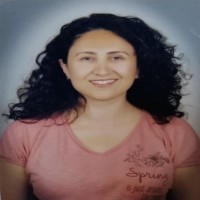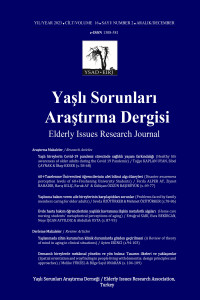Articles
Issue Editorial Board

Dr. Kadir ÖZKAYA, Hacettepe Üniversitesi Ağaç İşleri Endüstri Mühendisliği Bölümü’nde 1998 yılında Lisans eğitimini, 2002 yılında yüksek lisans eğitimini tamamladı. 2007 yılında Gazi Üniversitesi Mobilya ve Dekorasyon Eğitimi Ana Bilim Dalı’nda doktora eğitimini bitirdi.
1999 – 2002 yılları arasında Hacettepe Üniversitesi Ağaç İşleri Endüstri Mühendisliği Bölümü’nde araştırma görevlisi olarak çalıştı. Ardından Pamukkale Üniversitesi’ne bağlı Denizli Meslek Yüksekokulu Malzeme ve Malzeme İşleme Teknolojileri Bölümü Mobilya ve Dekorasyon Programı’nda 2003 – 2009 yıllarında Öğretim Görevlisi, 2009 – 2016 yıllarında olarak Yardımcı Doçent olarak görev yaptı. Dr. Kadir ÖZKAYA, 2016 yılında Doçent, 2021 yılında Profesör unvanını almış ve halen Denizli Teknik Bilimler Meslek Yüksekokulu’na bağlı Tasarım Bölümü İç Mekan Tasarımı Programı’nda akademik hayatını devam ettirmektedir.
Uzmanlık alanı olarak mobilya tasarımı ve mukavemeti, mühendislik tasarımı, ergonomik mobilya ve mekan tasarımı, yaşlı ve engellilere yönelik iç mekan tasarımı alanlarında çalışan Dr. Kadir ÖZKAYA’nın, çok sayıda ulusal ve uluslararası yayını bulunmaktadır.



1975 yılında Bremerhaven’de (Almanya) doğdu. 1992 yılında Hacettepe Üniversitesi Ev Ekonomisi Yüksek Okulu Ev idaresi ve Aile Ekonomisi Bölümüne girdi ve 1996 yılında bu bölümden mezun oldu. Aynı yıl Hacettepe Üniversitesi Ev Ekonomisi Yüksek Okulu Aile ve Tüketici Bilimleri Bölümünde Araştırma Görevlisi olarak göreve başladı. 2000 yılında “Yaşlıların Satın Alma Sırasında Karşılaştıkları Sorunlar ve Beklentilerinin İncelenmesi” konulu tezi ile Bilim Uzmanlığını aldı. 2006 yılında “Bireylerin Kişi ve Aile Olarak Emekliliğe Hazırlanmalarına İlişkin Plan Yapma Durumlarının İncelenmesi” konulu doktora tezi ile Doktora unvanını almıştır. 2012 yılında Doçentlik unvanını almıştır. 2018 yılın Karabük Üniversitesi İktisadi ve İdari Bilimler Fakültesi Sosyal Hizmet Bölümüne Profesör olarak atandı. Halen aynı Sosyal Hizmet Bölümünde bölüm başkanı olarak görev yapmaktadır. Gülay Günay’ın yaşlılık, emeklilik yaşamı ve sorunları, kadın ve kadın sorunları, aile, ailenin finansal davranışları, ailede yaşanan krizler gibi konularda ulusal ve uluslararası alanda pekçok kitap, dergi, kongre ve sempozyumlarda yayınlanmış çalışmaları bulunmaktadır. Gülay Günay evli, bir kız bir erkek iki çocuk annesidir.



Graduate of Translation department of Hacettepe University: I obtained my PhD from METU in 2019.



António Carvalho holds a PhD degree in Architecture with a thesis on housing design for older people. He is an Associate Professor at Politecnico di Milano, Italy, where he teaches how to design age-friendly housing and urban spaces. He is a researcher at DASTU – Department of Architecture and Urban Studies and his research interests are age-friendly housing, intergenerational spaces, inclusive environments, shared urban space, universal design, neighborhood green spaces, placemaking.
Antonio Carvalho is an awarded practising architect and urban designer who runs his own architectural practice in Lisbon since 1988, with extensive built work in Portugal.
Aim & Scope
The Elderly Issues Research Journal (EIRJ) is the official publication of the Elderly Issues Research Association (establishment 1998-YASAD). Original research articles on aging-related issues are published in the journal. The first issues of the journal, which started to be published in print in 2001, have been published in e-journal form since 2008. Our journal has been publishing under the hosting of TÜBİTAK-DERGİPARK since the 8th volume (2015). As of this date, the journal archive has been kept under record by Dergipark.
Scientific articles that examine aging from "social, cultural, economic, political, psychological, ergonomic and architectural aspects" rather than its biological dimension and produce solutions are accepted to the journal.
Author Guidelines
YAŞLI SORUNLARI ARAŞTIRMA DERGİSİ (YSAD)
“ELDERLY ISSUES RESEARCH JOURNAL (EIRJ)”
WRITING PRINCIPLES
General Features
• The total text length of the article should be between 4000 – 8000 words (including title, abstract, references and appendices).
• The text should be on A4 size paper, with 2,5 cm top, bottom, right and left margins, justified, without line break hyphenation.
• Paragraphs and headings should not be indented.
• In the Paragraph tab, at the paragraph spacing section, the before space should be 6 pt, the after space should be 0 pt, and the line spacing should be 1.15.
• The title of the article should be written in 14 font, Times New Roman, bold and left aligned.
• If the study has been presented in a congress/symposium, etc., or if it has been produced from a project or thesis, an explanation should be made by putting a * footnote at the end of the title.
• Author names should be 11 font, Times New Roman and plain. The full names of the author(s), the institutions they work for (university, faculty and department names), city and country names, ORCID ID and the e-mail address of the corresponding author should be stated in the footnote.
• Abstract should be written in Times New Roman, 10 font, 1.0 line spacing and should be between 200-250 words.
• Should not be cited any references in the abstract.
• Works written in Turkish must have a title and abstract in English, and also works written in English as a full text must have a title and abstract in Turkish.
• Keywords should be between 4-8 words.
• The manuscript should be written in Times New Roman, and 11 font.
• Quantitative and qualitative studies should include “Introduction, Method, Results, Discussion and Conclusion” sections.
• The Method section must have Sampling/Study Group, Data Collection Tools and Process subsections.
• In research studies “Ethics Committee Approval” should be documented.
• Whether there is a “conflict of interest” between the authors should be declared.
• Compilation studies should reveal the problem, examine the relevant literature competently, emphasize the deficiencies, gaps and contradictions in the literature, and talk about important steps for a solution.
• The spelling rules specified in the book “Publication Manual of American Psychological Association (APA)” (6th edition) published by the American Psychological Association should be applied both in the text and in the references.
• Tables, figures, pictures, graphics, etc. should be included in the text and should not be given separately at the end of the study. In tables and figures (depending on the size of the table) 9 or 10 font, Times New Roman should be used.
• Tables and figures should be left aligned and text wrapping should be turned off.
• Each appendix (if any) should be given on a separate page after the references.
Heading System
• The first letters of the words that make up the heading at each level should be capitalized (and suffixes such as with, and similar should always be written in lower case – in all languages).
• In the main title of the study, the first letter of each word should be capitalized (conjunctions are small), left aligned and bold. If possible, the title "INTRODUCTION" should be placed in the introduction section.
• ABSTRACT in Turkish and English should be left aligned, bold and capitalized.
• English title (first letter capitalized, 11 font) for Turkish articles, Turkish title for English articles should be between Abstract in Turkish and English.
• Second Level Titles (INTRODUCTION, METHOD, FINDINGS, DISCUSSION, etc.) should be centered, bold and each word should be written in capital letters. Second-level headings should be separated from the preceding paragraph by one line space.
• Third Level Headings (Working Group, Data Collection Tools, etc.) should be left aligned, bold and only the first letters should be capitalized.
• Fourth Level Headings should be one paragraph inside, bold, italic, only the first letter of the heading should be capitalized, the rest should be lowercase, and a full stop at the end.
• Fifth Level Headings should be one paragraph inside, italicized, only the first letter of the heading should be capitalized, the rest should be lowercase, and a full stop at the end.
• Headings should be numbered as 1., 1.1., 1.1.1, 2., 2.1., 2.1.2, ….
• References title should be centered, first letter capitalized and bold. The references should start 1.25 cm inside, except for the first line. In the Paragraph tab, at the paragraph spacing section, the before space should be 6 pt, the after space should be 0 pt, and the line spacing should be 1.15.
• Table and Figure Captions: Table captions should be above the table and figure captions should be below the figure. In the table and figure titles, the numbers should be written in italic characters, and the titles should be written in plain font with only the first letter capitalized.
• Only the first letter of the sentence should be capitalized (excluding proper nouns) in table and figure titles. Example: Table 1. Pre-test score averages of teachers according to their educational status / Figure 1. Factors affecting motivation
Reference Display
Reference notation in the text can take different forms:
• References in the text should appear as follow:
Single author; (Morrison, 2019);
Two authors; (Makadewi & Irwanti, 2016);
More than two authors; (Vigolo, Simeoni, Cassia & Ugolini, 2017).
• All authors – up to seven – are written in the first representations in the text; single and dual author representations do not change in subsequent representations of the same source; but when the number of authors is more than two should appear as (Vigolo et al., 2017).
• If the number of authors is more than seven, the first six authors are written and the last author is added regardless of the number. There are three dots (…) and & between the sixth author and the most recent author. Example; (Illario, De Luca, Leonardini, Kucharczyk, Parent, Dantas, … & Bousquet, 2019).
• If more than one work is to be referenced in the same parentheses in the text, they are listed chronologically, from oldest to newest, and works of the same date are listed alphabetically within themselves. Example: (Smith & Sylvestre, 2001; Cleaver & Muller, 2002; Fleischer & Pizam, 2002; Lee, 2005; Hsu, Cai & Won, 2007; Kim & Woo, 2014). If more than one work of an author published in the same year is to be used, both in the text and in the references, they are listed as “2021a”, “2021b” according to the alphabetical order of the work names.
• If the citations are to be shown in the form of “transferred by” should be shown as (cited by last name, year), for example: (as cited in Kim, Woo & Uysal, 2015). Only the author's name of the original source is included in the sentence. At the end of the sentence, the information of the author quoting from the primary source is given. In the references instead of the primary source, the work cited from the primary source should be given.
• If the text begins with one or two authors should appear as follow;
According to Norman (2001) … ;
According to Garcia and Martorell (2007) …..
• If the text begins with more than two authors should appear as follow;
According to Alen et al. (2012) …….
References Preparation
The references should be listed alphabetically according to the last name of the authors. More than one work by the same author is arranged chronologically from oldest to newest. If the same author has more than one work done in the same year, the works are listed alphabetically.
In the references, the last name of the author (comma), the first letter of the first name (dot), the year of publication in parentheses (dot), the name of the work (dot), the publication information (dot) are written.
All titles are written in lowercase letters after the first letter of the title (except for proper titles). Book and thesis titles are italicized, first letters are capitalized except for conjunctions; The titles of the articles published in the journals are written in plain, all lowercase except the first letter and proper names, the name of the journal in which the article was published and the volume number are written in italic characters.
Periodicals; Journal name (comma) volume number is written in parentheses and adjacent issue number (comma) page range (dot). This information, and in particular other notations, are illustrated below with examples.
Single author book;
• Last name, first letter(s) of the name. (year). Title of Book (Italic). Publisher: Place of publication.
Example: Gunter, B. (1998). Understanding the Older Consumer: The Gray Market. London: Routledge.
Book with two authors;
• Last name, first letter(s) of the name., & Last name, first letter(s) of the name. (year). Title of Book (Italic). Publisher: Place of publication.
Example: Cumming, E., & Henry, W. (1961). Growing Old. New York: Basic Books.
Studies with three to seven authors;
• All authors except the last author – Last name, first letter(s) of the name. & last author's Last Name, first letter(s) of name (year). The name of the book. Place of Publication: Publishing House.
Example: Gay, L. R., Mills, G. E., & Airasian, P. (2006). Education Research: Competencies for Analysis and Applications. Columbus, Ohio: Pearson Education Inc.
Studies with more than seven authors;
• After the first six authors, three dots are placed and the last author is written.
Example: Sezer, A., Şener, H., Akpınar, M. E., Bilgili, H., Sunar, İ., Ünal, V., … & Çetin, İ. (1995). Turkish Education History. Ankara: Nobel Publishing House.
Institutional studies;
• Institution Full Name (year). Title of Book (Italic). Place of Publication: Publishing House. Example: Ministry of National Education (2005). Elementary 1-5. Class Schedules. Ankara: MEB Publications.
Works with unknown author;
• The full name of the study. (year). Place of Publication: Publishing House.
Example: Prime Ministry Ottoman Archives Guide (2000). Istanbul: Publications of the General Directorate of State Archives.
When there is more than one work by the same author;
• The old dated work is given first.
Example: Horowitz, M. D. (2007). Medical tourism: Globalization of the healthcare marketplace. MedGenMed, 9(4), 1-33.
Horowitz, M. D. (2008). Medical tourism vs. traditional international medical travel: A tale of two models. IMTJ – International Medical Travel Journal, 1-14.
In studies with one author and studies published by the same author as a group;
• First, a single-author work is given.
Example: Kim, H. (2014). An examination of missing links between quality of life and tourist motivation. Tourism Analysis, 19(5), 629-636. doi:10.3727/ 108354214X14116690098016
Kim, H., Woo, E., & Uysal, M. (2015). Tourism experience and quality of life among elderly tourists. Tourism Management, 46, 465-476. doi:10.1016/j.tourman.2014.08.002
In studies with group authors starting with the same author;
• Studies are given in alphabetical order.
Example: Alen, E., Dominguez, T., & Losada, N. (2012). New opportunities for the tourism market: Senior tourism and accessible tourism. Murat Kasimoglu (ed.), In: Visions for Global Tourism Industry - Creating and Sustaining Competitive Strategies. IntechOpen. doi:10.5772/ 38092
Alen, E., Losada, N., & Dominguez Villa, T. (2012). The impact of ageing on the tourism industry: An approach to the senior tourist profile. Social Indicators Research, 127(1), 303-322. doi:10.1007/s11205-015-0966-x
When there is more than one work by the same author published in the same year;
• In accordance with alphabetical order; Last name, First letter of the name. (yeara). Last name, First letter of the name. (yearb).
Example: Alım, M. (2007a). Material design for geography lesson. Eastern Geography Journal, 17(27), 73-84.
Alım, M. (2007b). Importance of instructional technologies and material development course and suggestions regarding the teaching process. Eastern Geography Journal, 12(17), 243-262.
In the editorial book section;
• Last name of chapter author, first letter of the name. (year). The name of the book chapter. -Book editor's name first letter. Last name (Ed.), Title of the book (page range ..-..). Place of Publication: Publishing House.
Example: Kalınkara, V., Tezel, H. E., & Zorlu, T. (2016). Gero(n)technology: Elderly and technology. V. Kalınkara (Ed.). Aging: Interdisciplinary Approach, Problems, Solutions 2. (p.511-542). Ankara: Nobel Publishing House.
Article;
• Last name, first letter of name. (year). Title of the article. Journal Name (Italic), volume (issue), page range.
Example: Burnett, J., & Baker, H. B. (2001). Assessing the travel-related behaviors of the mobility-disabled consumer. Journal of Travel Research, 40(1), 4-11. doi:10.1177/0047 28750104000102
In periodicals published in numbers without volume numbers;
• Last name, first letter of name. (year). Title of the article. Journal Name (Italic), issue, pages.
Example: Hanton, S., Mellalieu, S. D., & Hall, R. (2003). Self-confidence and anxiety interpretation. Psychology of Sport and Exercise, 5(4), 477-495. doi:10.1016/S1469-0292(03)00040-2
In dated periodicals;
• Last name, first letter of name. (year, month (in written) day). Title of the article. Journal Name (Italic), pages.
Example: Genç, M. (2014, April 8). Classical Ottoman social-economic system and foundations. Foundations Journal, 28-31.
Book summary;
• Last name, first letter of name. (year). Title of abstract [Summary of the book “book titled” written by the last name, first letter of name of the Author]. Journal Name (Italic), issue, pages.
Example: Soysal, B. (2005). Women and family structure according to regions [Summary of the book "Women and family in Turks" written by Neziha. S.]. Journal of Social and Human Sciences, 3, 12-15.
Edited book without an author;
• Last name, first letter of name, and Last name, first letter of name. (Eds.). (year). The title of the book (italics). Place of Publication: Publishing House.
Example: Akman, B. (Ed.). (2012). Preschool Mathematics Education. Ankara: Pegem Publications.
Translated works;
• Last name, first letter of name. (year). The name of the translated work. (-Translator- first letter of name. Last name., trans.). Publisher: Publishing House (Original work … published). If this source is to be cited in the text, both dates should be given in parentheses. Example (1814/1951) Example: Laplace, P. S. (1951). A Philosophical Essay on Probabilities. (F. W. Truscott & F. L. Emory, trans.). New York: Dover. (The original work was published in 1814).
Books with multiple editions;
• Last name, first letter of name. (year). Title of the book (print number). Place of Publication: Publishing House.
Example: Yıldırım, A., & Şimşek, H. (2006). Qualitative research methods in the social sciences. (6th edition). Ankara: Seçkin Publishing.
Studies with more than one volume;
• Last name, first letter of name. (year). Title of the book (Italic) (volume). Place of Publication: Publishing House.
Example: Wiener, S. (Ed.). (1975). Dictionary of Historical Ideas (vol. 3). New York: Scribner's.
Published theses;
• Last name, first letter of name. (year). Thesis title (italics). (Type of thesis). The name of the imported database. (access / sequence number).
Example: Choi, J. Y. (2011). Teacher Qualifications and Preschoolers' Math Outcomes: Mediation by Teacher Child Relationship? (PhD Thesis). Taken from the Dissertations and thesis database. (7741A).
Unpublished theses;
• Last name, first letter of name. (year). Thesis Title (Italic). (Unpublished … Thesis). University Name, Institute Name, City.
Example Seyhan, B. C. (2013). The Effect of Reflective Thinking Strategies Used in Teaching the Nervous System on Students' Success, Attitudes and Persistence of Knowledge. Unpublished Doctoral Thesis. Ataturk University, Institute of Educational Sciences, Erzurum.
Institutional printed works;
• The name of the institution. (year). The title of the book (italics). (Institution publication number). Place of Publication: Publishing House.
Example: State Planning Organization. (2008). Eighth Development Plan, General Principles. (DPT Publications No. 14). Ankara: DPT Publishing House.
Reports of private institutions;
• The name of the institution. (year). The name of the report. Place.
Example: Turkish Education Association. (2015). Strategies for Increasing Academic Success. Ankara.
Conference / congress proceedings book;
• Last name, first letter of name. (Ed.). (year). … papers: Name of the congress. Place.
Example: Çelik, H., Seren, R., & Uzun, K. (Eds.). (2015). UEBK '15 papers: 24th National Educational Sciences Congress. Nigde.
Papers in the conference / congress proceedings book;
• Author last name, first letter of the name. (year). Paper name. Name of the congress (italics). Editor if available. (page range). Date, the city where it was made.
Example: Kalınkara, V. & Arpacı, F. (2013). Aging in place. 7th National Aging Congress (Active and Healthy Aging). (Eds. G. Günay, A. Oğuz & A. R. Karataş). (p.54-60). 23-25 May, Karabuk.
Online articles;
• Last name, first letter of name. (year). The name of the article. Name of Online Journal (italics), volume (issue). …. accessed from.
Example: Öçal, T., Öçal, M. F., & Şimşek, M. (2015). Investigating mathematical concepts and skills in story books appropriate for pre-schoolers. Current Research in Education, 1(2), 58-69. Retrieved from http://dergipark.ulakbim.gov.tr/crd/article/viewFile/500 0144865/5000140192.
Online articles with a DOI number;
• Last name, first letter of name. (year). The name of the article. Name of Online Journal, volume (issue), page range. doi: ……
Example: Uçar, T. & Duy, B. (2013). The relationship between locus of control and selfconfidence with problem solving skills of midwifery and nursing students. TAF Preventive Medicine Bulletin, 12(6), 689-698. doi: 10.5455 / pmb.1-1356300604
Online articles accessed from the database;
• Last name, first letter of name. (year). The name of the article. Name of Online Journal, volume (issue), page range. ….. accessed from database.
Example: McIntyre, D. (2004). Point of view in drama: A socio-pragmatic analyzes of Dennis Potter's Brimstone and Treacle. Language and Literature, 13(2), 139-160. Accessed from Academic Search Complete database.
Article summaries;
• Last name, first letter of name. (year). The title of the article [Abstract]. Journal Name, volume (issue), page range.
Example: Latham, D. (2005). Speaking, listening and learning: A rationale for the speaking and listening profile [Summary]. English in Education, 39(1), 60-74.
Electronic books;
• Last name, first letter of name. (n.d.). The name of the book. …. accessed from.
Example: Tarnas, R. (n.d.). The history of western thought. Retrieved from http://e-books.com/816764763.
Ethical Principles and Publication Policy
* The principles stated below have been prepared on the basis of the standards specified by COPE and YÖK.
The author checks and confirms whether the article complies with the ethical standards, publication principles and writing rules adopted by the Journal before it is sent to the Journal.
The referee evaluates the article sent to him by considering the principles in the link announced by COPE (https://publicationethics.org/files/Ethical_Guidelines_For_Peer_Reviewe…) and forwards it to the editorial board within the time given to him.
4. Responsibility of the Editor and Editorial Board
a) Impartiality: The editor conducts the evaluation process of the works regardless of the religion, gender, nationality and political view of the author.
b) Confidentiality: The Editor ensures that the principle of blind refereeing is protected during the publication process. It also takes measures to prevent the occurrence of a conflict of interest between the author and the referee.
c) Fairness: He considers the COPE guidelines for the compliance of the Referee process with ethical standards.
d) Cooperation and Coordination: They provide the necessary cooperation and coordination for the completion of the evaluation process of the articles within the stipulated time.
e) Sharing Information: The editor observes the principles in the link determined by COPE (https://publicationethics.org/files/Sharing%20_of_Information_Among_EiC…) in sharing information about the journal's publication process and article evaluation processes with other members of the Editorial Board.
f) Ethical Violations: The Editor abides by the rules in the link specified by COPE (https://publicationethics.org/files/Full_set_of_flowcharts_Turkey_2017%…) when there are duplicate publications, slicing, plagiarism, false data, conflict of interest and unfair authorship suspicion for an article sent to the Journal for publication or published in previous issues of the Journal, and when there are requests for change of authorship.
Ethics Committee Permission is required for studies to be published since 2020 in line with the decisions taken by Ulakbim TR Index and Dergipark. Studies requiring Ethics Committee Permission are listed below. When uploading your work to the journal, you must upload your Ethics Committee document with your article file. If your study is not included in the study group requiring ethics committee approval, you must sign the declaration form indicating this situation and indicate the relevant situation in your article text.
- All kinds of research conducted with qualitative or quantitative approaches that require data collection from participants using questionnaires, interviews, focus group work, observation, experimentation, interview techniques,
- Using human and animals (material / including data) experimental or other scientific purposes,
- Clinical studies on humans,
- Clinical studies on animals,
- Retrospective studies in accordance with the law on protection of personal data.
It should be noted that there are copyright regulations for the intellectual and artistic works used.
To reach the declaration form stating that the study does not require Ethics Committee Permission, please CLICK HERE.
Studies Requiring Ethics Committee Permission and Accepted for Publication
- In studies requiring ethics committee approval, information about permission (name of the board, date and number) should be included in the method section and on the first / last page of the article.
- In case presentations, the information that the informed consent form was signed should be included in the article.
Price Policy
No fee is charged for peer-review and publication in the journal.
If the articles are accepted for publication, all publication rights of the articles, including publishing them electronically, belong to the Editorial Board of the Elderly Issues Research Journal (EIRJ). No royalties are paid to authors in this situation.
Before submitting the manuscript, the "Ethical Principles and Publication Policy" page must be reviewed.







